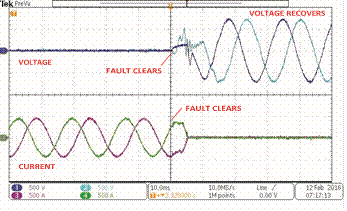An increased focus on grid resiliency along with the proliferation of Distributed Energy Resources (DER)—such as solar and wind—has made microgrids an attractive alternative to the traditional centralized grid system. But what are microgrids, and what value can they provide to grid resiliency?
What are microgrids?
Microgrids are small collections of loads controlled locally by a limited number of DERs, as opposed to large centralized power systems—which are operated and controlled from a centralized authority. Large centralized power systems maintain system stability through top down control and the aggregated inertia of the system.
The benefits of microgrid energy storage
The proliferation of DERs like wind and solar have made the grid model system complicated to control from a centralized authority. Microgrids can help to simplify this problem by breaking it up into discrete components, which can then be controlled as a smaller grid, independent of the larger grid.
Smaller, independent microgrids can help to improve grid resiliency by reducing the impact of faults to finite areas on the grid. Faults can be isolated to one section—without impacting the ability of other surrounding microgrids—to keep operations up and running. For this reason, on-grid/off-grid microgrids are extremely valuable, especially for critical power systems.
Microgrid energy storage also allows operators to actively balance energy on the grid by alternately injecting and absorbing excess power. The method and speed for how the power balance is controlled is the key to microgrid stability.
Dynapower’s self-healing microgrid

At Dynapower, all of our power conversion systems (PCS) can quickly and reliably respond to frequency and voltage deviations to improve microgrid stability.
We have years of experience in reliable islanded (offgrid) operation, as well. Our industry-leading speed of response maintains microgrid voltage and frequency while minimizing deviations through various microgrid conditions.
Another factor that can impact microgrid reliability is the system’s ability to appropriately isolate and react to system faults. Isolation is typically provided by overcurrent protection devices (OCPD) such as breakers and fuses; however, these OCPDs rely on an adequate amount of fault current to be provided by the systems’ sources to trip the OCPD and isolate the fault.
Dynapower’s PCS are designed to provide fault current in accordance with their overload capability when operating in microgrid mode—thus, providing enough current to isolate the system fault. Isolation of the fault enables the microgrid to “self-heal” and continue reliable operation.
Dealing With Step Changes
To maintain system voltage and frequency stability, step changes in the load in both the positive and negative directions need to be immediately responded to.
Dynapower’s ‘Microgrid Mode’ features high-speed controls that are capable of servicing load steps of up to 100% rated power in under 8ms. The high speed of response enables the Dynapower PCS to maintain stable operation of the microgrid through controlled injection and absorption of real and reactive current, minimizing the impact seen by the microgrid system loads.
Managing Inrush Currents

Dynapower’s patented Black Start capability enables Dynapower PCS to support high start-up currents to start a microgrid after a blackout. To do so, Dynapower’s Black Start ramps the microgrid voltage and frequency to mitigate the high inrush magnetizing currents. This soft start of the system means the inverter will not have to be sized to support the high inrush currents, while still enabling the microgrid system to start the microgrid.
By using settable ramping limits, Dynapower PCS can Black Start any type of transformer load, making it distinctive in the marketplace and providing unique value to microgrid operators.
Control of multiple DER with microgrids
As microgrids grow larger, a single system may not be large enough to fully service the load of the microgrid and will require multiple power electronics enabled-DER.
With multiple DER deployed on the same microgrid, these power electronic devices must communicate reliably to maintain overall voltage and frequency stability of the microgrid. Coordination of these DER resources needs to be done quickly in order to maintain system stability while minimizing overall system cost.
Dynapower PCS can be configured to run microgrids with multiple parallel systems as well as other forms of DER. Unit to unit communication for load sharing is accomplished with frequency and voltage droop on the microgrid system. This reduces costs for microgrid installers and increases reliability for systems owners.
The benefits of energy storage microgrids are far-reaching and continuing to evolve. At Dynapower, we are proud to be on the forefront of energy storage microgrids and their ongoing role in putting power to purpose.
For more information on Dynapower’s microgrid capabilities and products, please contact us or download our Microgrid Capabilities whitepaper.